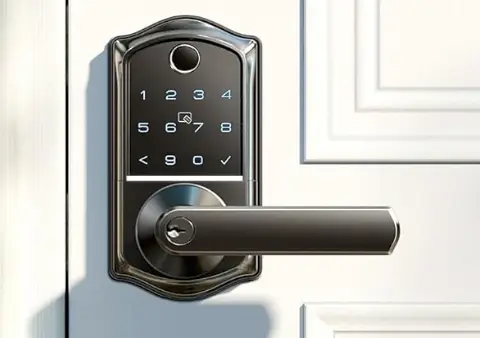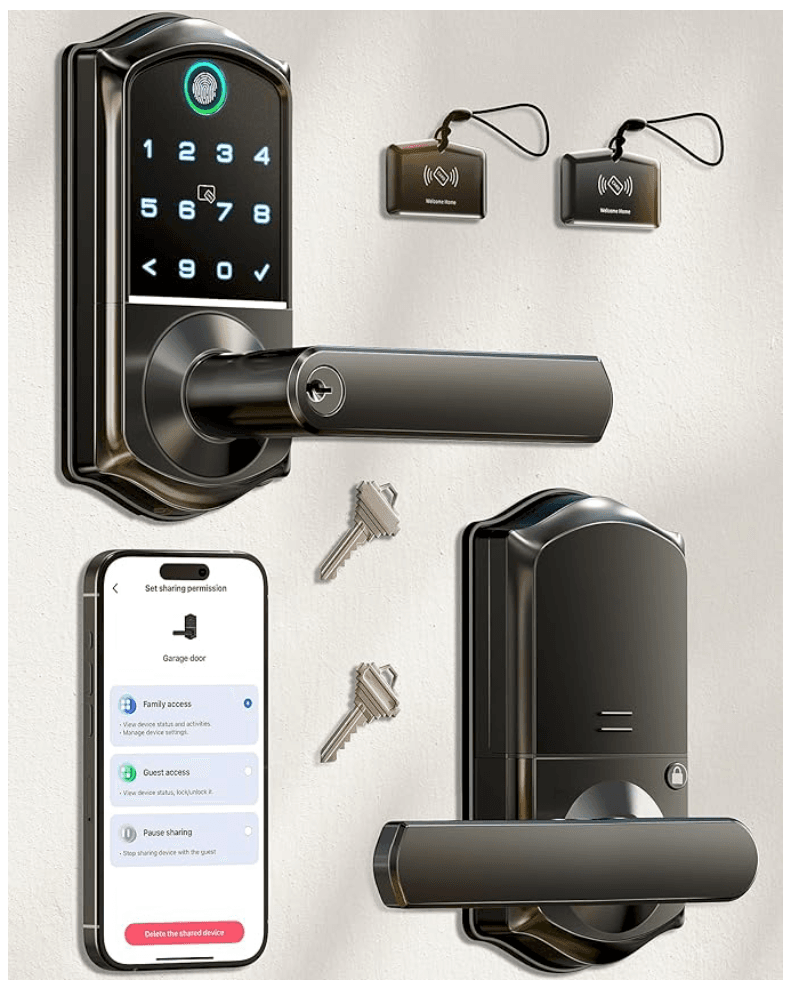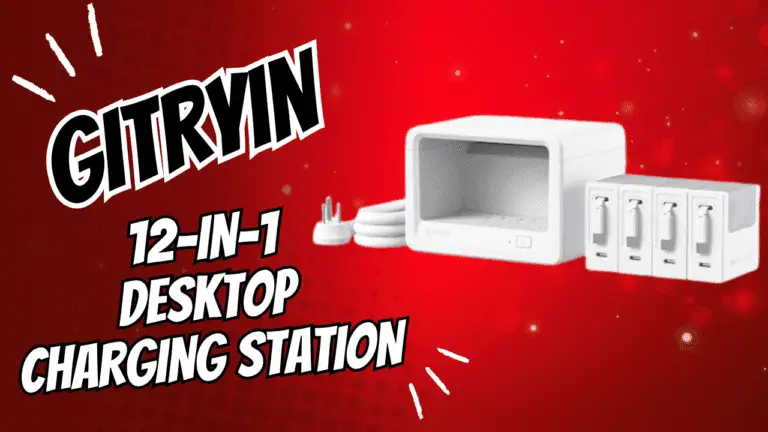
Veise VE019 Fingerprint Smart Lock
Share this content:
Introduction to Smart Digital Door Locks
In recent years, the landscape of home security has undergone a significant transformation with the advent of Smart digital door locks. These innovative locking mechanisms represent a shift from traditional key-based systems to advanced solutions that incorporate modern technology, providing enhanced security and convenience for homeowners. Digital door locks utilize a combination of fingerprint recognition, WiFi connectivity, and numerical codes, allowing for a more sophisticated approach to home access control.
The evolution of locking mechanisms can be traced back to ancient times when simple wooden door latches were the norm. As security concerns heightened, locks became increasingly sophisticated, leading to the mechanical locks that dominate traditional home security today. However, the limitations of physical keys—such as the risk of losing them, being locked out, or having them stolen—have spurred the development of digital alternatives. Digital door locks address these vulnerabilities by offering keyless entry options that can be customized to suit individual user needs.
One of the most prominent features of digital door locks is their reliance on electronic systems that enable various authentication methods. Fingerprint readers, for example, provide a convenient and secure way for authorized users to gain access, as biometric data is unique to each individual. Additionally, WiFi-enabled locks can be connected to home networks, enabling remote management through smartphone applications. This integration not only allows users to monitor who enters and exits their homes but also facilitates real-time updates and alerts, enhancing overall security.
Moreover, digital locks contribute to a cohesive smart home security system by integrating seamlessly with other devices, such as surveillance cameras and alarms. As technology continues to advance, the future of home security lies in these intelligent systems, which prioritize safety, adaptability, and user convenience.
Understanding the Mechanics of Fingerprint Readers
Fingerprint readers have emerged as a pivotal technology in modern home security systems, providing an efficient and reliable means of authentication. At the core of these systems lies a sophisticated process that begins with the scanning of a fingerprint. When an individual places their finger on the scanner, the device captures an image of the fingerprint, which includes unique ridges and valleys that differentiate one fingerprint from another.
There are primarily two types of fingerprint-reading technologies: optical and capacitive. Optical fingerprint readers utilize light to capture an image of the fingerprint, while capacitive readers use electrical charges to detect the contours of the fingerprint. Both methods focus on ensuring the accurate representation of the unique fingerprint patterns, which is crucial for a successful authentication process.
After the initial scanning, the fingerprint data is converted into a digital template. This template is then compared against stored templates within the system’s database. A matching algorithm analyzes key features of the scanned fingerprint, such as ridge endings and bifurcations, to verify identity. This ensures that unauthorized users are unable to gain access, as their fingerprint would not match any in the system.
Security measures are incorporated to further protect the integrity of the fingerprint authentication process. Many systems utilize encryption techniques to secure data transmission between the fingerprint scanner and the control unit, thwarting potential cyber threats. Additionally, some advanced fingerprint readers come equipped with liveness detection technology, which helps to prevent spoofing attempts using replicas of fingerprints made from materials like silicone or gel.
Overall, fingerprint readers not only enhance the convenience of accessing secured premises but also deliver substantial security benefits. By leveraging biometric technology, homeowners can enjoy a modern and sophisticated approach to ensuring their safety.
Check out the Veise VE019 Fingerprint Smart Lock (shown below) at Amazon (Affiliate Linked)

WiFi Connectivity in Smart Digital Locks
WiFi connectivity in digital door locks represents a significant advancement in home security technology. These locks function by connecting to your home’s WiFi network, allowing homeowners to control and monitor their doors remotely. This connectivity enables users to lock or unlock their doors from anywhere using a smartphone application, providing unparalleled convenience. With just a tap on a device, homeowners can grant access to visitors or service personnel, eliminating the need for physical keys.
One of the primary advantages of WiFi-enabled locks is their integration with home automation systems. Homeowners can integrate these digital locks into their broader smart home ecosystems, allowing for seamless interaction with other connected devices, such as security cameras, alarms, and lighting systems. For example, a homeowner could set their smart lock to automatically unlock when they arrive home, all while triggering the front porch lights to illuminate. This level of integration significantly enhances the user experience and bolsters home security by ensuring that all systems work in coordination.
In terms of security, WiFi-connected locks offer features such as real-time alerts and activity logs, enabling homeowners to monitor who enters and exits their property at any given time. This capability allows users to receive notifications on their smartphones if someone attempts to tamper with the lock or if it is accessed during unusual hours. Consequently, this added layer of security is particularly valuable for those who want to keep an eye on their homes while away, whether they are at work or traveling. Additionally, firmware updates can be deployed over WiFi, ensuring that the lock’s security features are always up to date, addressing vulnerabilities as they arise.
Using Access Codes: The Versatility of Smart Digital Locks
Digital door locks equipped with access codes represent a significant advancement in home security technology. Unlike traditional locking mechanisms, these modern systems provide users with versatile options to manage entry to their homes more effectively. Access codes serve as an alternative or complement to biometric technology, such as fingerprint readers, and offer a unique blend of security and convenience.
One of the notable features of access codes is their customizability. Homeowners can set unique codes that only trusted individuals know, minimizing the risk of unauthorized access. This adaptability allows users to personalize their security measures to suit their needs. For example, family members might have their distinct codes, while service providers can be given temporary codes that expire after a specified duration. This feature is particularly advantageous for homeowners wishing to grant short-term access to guests, maintenance workers, or delivery personnel without having to physically hand over a key.
Moreover, the ability to easily change access codes enhances home security further. In the event of a security breach or when a guest no longer requires access, homeowners can simply update the code. This process is far more efficient than changing physical locks, which can be time-consuming and costly. As a result, home security becomes an agile system that can quickly adapt to evolving circumstances.
Access codes can also be integrated with other security features, including alarms and surveillance systems. For instance, residents might receive notifications alerts when a code has been used, providing real-time feedback on who enters the property. Consequently, access codes not only bolster security but also deliver peace of mind, ensuring that homeowners maintain control over their living space. In this regard, digital locks with access codes are a formidable option for enhancing residential security.
Benefits of Smart Digital Door Locks
Digital door locks represent a significant advancement in home security, providing numerous benefits that traditional locks cannot match. One of the primary advantages is enhanced security. Digital locks utilize advanced technology, such as biometric recognition, to ensure that only authorized individuals can gain access to your property. This considerably reduces the risk of unauthorized access, as traditional keys can be easily lost or duplicated, whereas digital access methods can be much more secure and unique to each user.
Convenience is another major benefit associated with digital door locks. Families can set up multiple access codes or even utilize fingerprint scanners for different members, eliminating the need to hand out physical keys. This is particularly useful in situations such as renting a home, where guest access needs to be carefully managed. Homeowners can grant temporary access to visitors or service personnel through unique codes without worrying about retrieving physical keys later on. This flexibility makes daily life more convenient and reduces the hassle of carrying keys around.
In addition to increased security and convenience, digital door locks can offer peace of mind. Most digital systems provide notifications to homeowners when the door is locked or unlocked, enabling residents to monitor their entry points remotely. This feature is especially beneficial for those who travel frequently or leave children at home. The ability to verify door status ensures that they need not worry about whether they remembered to secure their home. Overall, the integration of technology in door locks improves not only the security of the home but also the ease of use for all family members, ultimately contributing to a safer living environment.
Safety Features of Smart Digital Door Locks
As technology continues to advance, digital door locks have emerged as a sophisticated alternative to traditional lock systems, incorporating essential safety features that enhance home security. Among the most significant attributes of these innovative locks are tamper alarms, which trigger a warning when unauthorized access attempts are detected. This real-time alert system acts as a deterrent against potential intruders and provides homeowners with peace of mind, knowing their entrance is actively monitored.
Another critical safety feature is the low battery alert, which notifies users when the lock’s battery is running low. This proactive measure helps ensure that homeowners do not get caught off guard by a deceased lock battery, thereby maintaining access control. Many modern digital locks are designed to function even with a weak battery, allowing users to open the door with alternative methods, such as a physical key or a backup code. This redundancy is vital for maintaining security while addressing the practical limitations of battery-operated devices.
Encryption methods play a fundamental role in safeguarding digital door locks from cyber threats. Most advanced models utilize AES (Advanced Encryption Standard) protocols, ensuring that encrypted communication occurs between the lock and the user interface. Such encryption reduces the risk of unauthorized access via digital means, which may involve attempts to bypass security measures electronically. Thus, it is crucial that homeowners select a digital door lock that employs robust encryption techniques, as this significantly enhances their home security.
In essence, the safety features found in digital door locks are indispensable components that contribute to the overall security of a home. By incorporating tamper alarms, low battery alerts, and advanced encryption methods, these locks provide comprehensive protection while catering to the evolving needs of modern households. Homeowners should prioritize these features when selecting digital locking systems, as they serve as a foundation for reliable and effective home security.
Comparative Analysis: Traditional Locks vs. Smart Digital Locks
In the realm of home security, both traditional locks and digital locks possess distinctive characteristics that cater to different user needs. Traditional locks, primarily mechanical in nature, provide a tactile and familiar mechanism through the use of keys. They have been a staple of security systems for decades, offering simplicity and generally lower initial costs. However, their reliance on physical keys can lead to vulnerabilities, such as lock picking or key duplication. Additionally, when a key is lost or stolen, immediate measures must be taken to ensure security, often involving rekeying or replacing the locks.
On the other hand, digital locks incorporate advanced technologies such as fingerprint readers, WiFi connectivity, and numerical codes, significantly enhancing user convenience and security. The most notable advantage of digital locks is their ability to eliminate the need for physical keys, reducing the risks associated with lost or stolen keys. They often come with features like remote access, allowing homeowners to unlock their doors from a distance, and the capacity to create unique codes for different users. However, they require a regular power source and may necessitate maintenance to ensure the electronics function correctly.
When comparing security features, digital locks tend to offer a higher level of security due to their complex mechanisms and integrated technology. Many digital locks include tamper alarms and automatic locking systems, which can deter potential intruders more effectively than traditional locks. Nevertheless, reliance on electronic systems can pose risks, such as hacking or battery failure, necessitating regular checks and updates to the device.
Ultimately, the choice between traditional and digital locks boils down to individual preferences, lifestyle considerations, and security needs. Homeowners must weigh the convenience and advanced security features of digital locks against the reliability and simplicity of traditional locks to determine the best fit for their security requirements.
Considerations Before Investing in Smart Digital Door Locks
As home security continues to evolve, many homeowners are considering the transition to digital door locks equipped with fingerprint readers, WiFi capabilities, and access codes. The allure of these advanced security solutions is understandable, but there are several critical factors to weigh before making an investment. Understanding these considerations will empower potential buyers to select the right digital lock tailored to their home security needs.
First and foremost, the budget plays a significant role in the decision-making process. Digital door locks come in a variety of price ranges, with basic models costing less compared to more sophisticated systems featuring advanced functionalities. It is essential to assess not only the initial purchase cost but also the long-term expenses associated with maintenance and potential upgrades. This comprehensive evaluation will help in ensuring that the chosen lock aligns with financial expectations.
Moreover, compatibility with existing hardware is another vital aspect that homeowners should consider. Before investing in digital door locks, one must verify whether the new locks can be integrated seamlessly with current door frames and fittings. An incompatible lock can lead to unnecessary expenses and may compromise the overall security of the home.
The ease of installation is an equally important factor to deliberate upon. Some digital locks require professional installation, which can add to the overall cost, while others may be user-friendly enough for a DIY approach. Understanding the level of technical skill required for installation can facilitate a smoother transition to this modern security solution.
Lastly, identifying the desired features is crucial in choosing the right digital door lock. These locks can come with various functions such as remote access, temporary codes for guests, or alerts for suspicious activity. Assessing one’s security needs will help in selecting a device that balances functionality with simplicity. In summary, careful consideration of these elements will pave the way for making an informed and beneficial investment in digital door locks for any home.
Conclusion: Making the Switch to Smart Digital Security
As we have explored throughout this blog post, the evolution of home security systems has led to the emergence of digital door locks equipped with fingerprint readers, WiFi connectivity, and numerical codes. These innovative solutions offer enhanced security measures, making them an indispensable choice for modern homeowners. Digital door locks not only provide robust protection against unauthorized access but also deliver a level of convenience that traditional locks cannot match.
Fingerprint recognition technology ensures that only authorized individuals can enter, effectively reducing the risk of key duplication and unauthorized entry. Furthermore, the integration of WiFi allows homeowners to monitor and control their locking systems remotely. This capability means that one can lock or unlock their doors from anywhere, receive real-time notifications about access events, and even grant temporary access codes to visitors or service personnel when needed.
The use of digital systems does not merely enhance security; it also reflects a growing emphasis on smart home technology. With the increasing compatibility of these systems with broader smart home devices, users can enjoy seamless integration, adding to the overall efficiency and convenience of their living spaces. The customizable nature of these locks allows homeowners to tailor their security settings to meet individual lifestyle needs, promoting a sense of safety and peace of mind.
In light of these benefits, it is clear that transitioning to digital door locks, featuring fingerprint readers, WiFi connectivity, and customizable codes, represents a wise investment in home security. As technology continues to advance, it is vital for homeowners to conduct thorough research into the available options and consider making the switch to enhance both the safety and convenience of their homes. Taking proactive steps now will undoubtedly lead to a more secure future.





